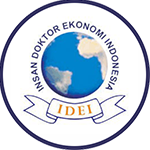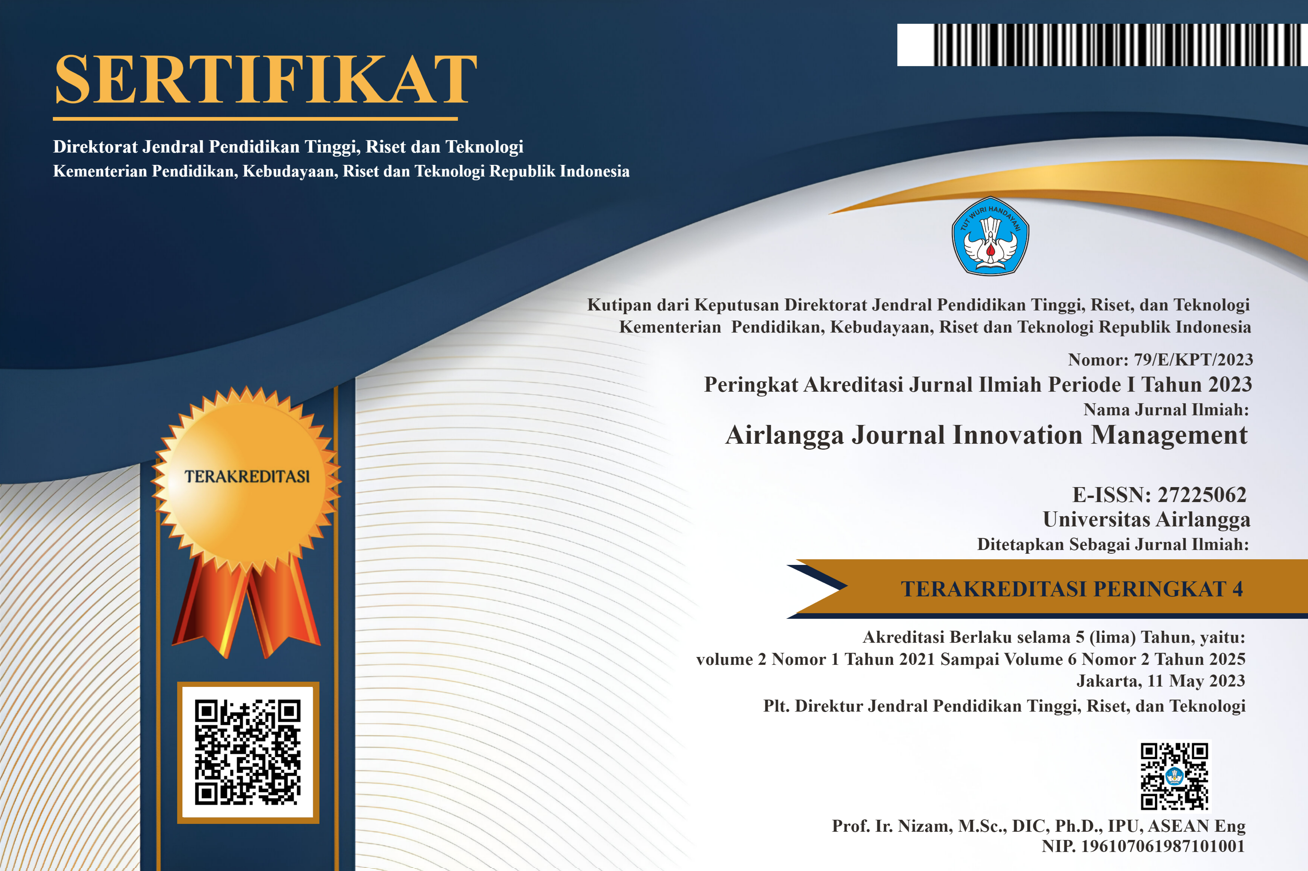Assistance in the Implementation of Hazard Analysis Critical Control Point (HACCP) and Borac Quality Control: Food Industry Analysis
Downloads
The quality and food safety management system currently implemented is HACCP (Hazard Analysis Critical Control Point). Supporting factors that are prerequisites for the effectiveness of implementing HACCP as a quality control system is the fulfillment of basic feasibility requirements. This research uses a qualitative approach. The method used is descriptive verification to obtain an accurate and actual picture of the facts and nature of the relationships between phenomena discovered by CCP in the process flow. Problems that occur in the development of home industries such as the non-borax onion shell processing business include low quality, quality, quality control, and food safety. So, to achieve good quality puli crackers and according to the required criteria, namely SNI No.01-4307-1996, supervision and control need to be carried out at every stage of the process, starting from receiving raw materials until the product is ready to be marketed. On the other hand, a quality control concept system is needed to minimize errors in the production process and the risk of food safety hazards, one of which is by implementing the Hazard Analysis Critical Control Point (HACCP) concept. From the results, this research can be concluded that the shell processing unit at the research location at CV Marsudi Luhur has not implemented a quality control system and HACCP properly. Research result It is hoped that this can be used as a basis for further research on quality and safety assurance of food and environmental quality for making non-borax onion shells around the Sukoharjo district.
Achsa, A., Verawati, D. M., & Novitaningtyas, I. (2023). Implementation of Marketing Strategy Innovation and Business Model Development: Study of SMEs in Tourism Village. Airlangga Journal of Innovation Management, 4(2), 172–184. https://doi.org/10.20473/ajim.v4i2.49859
Arisandi, K. D., & Parma, P. G. (2019). Implementasi Hazard Analysis and Critical Control Point ( HACCP ) dalam Penyimpanan Bahan Baku Makanan di Hotel Discovery Kartika Plaza Hotel. 2(1), 55–71.
Ahmad, T. L., & Fitria, H. (2021). JAPTI : Jurnal Aplikasi Ilmu Teknik Industri KEUNGGULAN BERSAING DAN KINERJA PERUSAHAAN ( STUDI PADA UMKM KLASTER BANDENG PRESTO SEMARANG ) Pendahuluan JAPTI : Jurnal Aplikasi Ilmu Teknik Industri Volume 2 ,
Awuchi, C. G. (2023). HACCP, quality, and food safety management in food and agricultural systems. Cogent Food & Agriculture, 9(1), 2176280.
Budiman. 2021. Analisis Dibidang Mutu Makanan,Jurnal Teknologi Pangan. 1(10).Nomor 2 , pp 66-74. 2(September), 66–74.
Citraresmi, A. D. P., & Wahyuni, E. E. (2018). Implementation of hazard analysis and critical control point (HACCP) in dried anchovy production process. IOP Conference Series: Earth and Environmental Science, 131(1). https://doi.org/10.1088/1755-1315/131/1/012021
Di, S., Serua, S. D. N., Kota, I., Utami, A., , P., Pendidikan, F. I., Jakarta, U. M., Kh, J., Dahlan, A., & Ciputat, C. (n.d.). Analisis kandungan zat pengawet boraks pada jajanan sekolah di sdn serua indah 1 kota ciputat. 57–62.
Ekonomi, M. (2019). Analisis pengendalian mutu produk roti manis dengan metode. V(2), 103–110.
Mafruchati, M., Ismail, W. I. W., Wardhana, A. K., & Fauzy, M. Q. (2023). Bibliometric analysis of veterinary medicine on embryo of animals in textbook in conceptualizing disease and health. Heliyon.
Mafruchati, M., Wardhana, A. K., & Ismail, W. I. W. (2022). Disease and viruses as negative factor prohibiting the growth of broiler chicken embryo as research topic trend: a bibliometric review. F1000Research, 11(1124), 1124.
Nurkhamidah, S. (2018.). IDENTIFIKASI KANDUNGAN BORAKS DAN FORMALIN PADA MAKANAN DENGAN MENGGUNAKAN SCIENTIFIC VS SIMPLE.
Pt, D. I., & Indah, M. (2020). PENERAPAN HACCP ( HAZARD ANALYSIS AND CRITICAL CONTROL POINT ) PADA PROSES PRODUKSI SUKLAT MOCACHINO DAN CHOCO GRANULE. 1–20.
Poernamasari, D.W. (2023). The Effect of Profit-Sharing on the Productivity of Small and Micro Enterprises in Indonesia. Airlangga Journal of Innovation Management, 4(2), 198-207. https://doi.org/10.20473/ajim.v4i2.48385
Rejeb, A. (2018). Halal meat supply chain traceability based on HACCP, blockchain and internet of things. Acta Technica Jaurinensis, 11(1).
Ryandono, M. N. H., Mawardi, I., Rani, L. N., Widiastuti, T., Ratnasari, R. T., & Wardhana, A. K. (2022). Trends of research topics related to Halal meat as a commodity between Scopus and Web of Science: A systematic review. F1000Research, 11(1562), 1562.
Nurhamzah, L. Y., Sumaryanto, H., Susilowati, P. E., Dahlan, A., Gizi, P. S., Kesehatan, F. I., Siliwangi, U., Teknologi, D., Perairan, H., Perikanan, F., Gizi, P. S., Teknologi, I., & Avicenna, K. (2023). ANALISIS PENERAPAN SISTEM HAZARD ANALYSIS CRITICAL CONTROL POINT ( HACCP ) PADA PROSES PEMBUATAN SNACK KAKTUS METE. 8(6), 6949–6962.
Sonalia, D. (2013). Pengendalian Mutu Pada Proses Produksi Di Tiga Usaha Kecil Menengah Tahu Kabupaten Bogor Musa Hubeis. IV(2), 112–127.1 1) , 2) ,. (2021). 1(10).
Winarno, FG 2004. Food Chemistry and Nutrition. Gramedia Pustaka Utama. Jakarta.
Widodo, R., Dwi Cahyani, W. K., Widodo Wibowo, T. Y., & Wulandari, A. (2022). Application of Hazard Analysis and Critical Control Points (HACCP) on The Production Process Line of Noni Juice Drink (Morinda Citrifolia L.). Food Science and Technology Journal (Foodscitech), 69–80. https://doi.org/10.25139/fst.vi.4550
Vatria, B. (2022). REVIEW : PENERAPAN SISTIM HAZARD ANALYSIS AND CRITICAL CONTROL POINT ( HACCP ) SEBAGAI JAMINAN MUTU DAN. 104–113.
Yudha, A. T. R. C., M. Afif, I., & Agustianto, M. A. (2022). COOPERATIVE TRADING HOUSE IN SME'S EMPOWERMENT: A HIFDZUL AQL PERSPECTIVE. Airlangga Journal of Innovation Management, 3(1), 61–70. https://doi.org/10.20473/ajim.v3i1.3699
Copyright (c) 2024 Airlangga Journal of Innovation Management

This work is licensed under a Creative Commons Attribution-NonCommercial-ShareAlike 4.0 International License.
- The journal allows authors to hold copyright without restrictions and retain publication rights without restrictions. The author retains the copyright and grants the first publication rights to the journal, with his work simultaneously licensed under the Creative Commons Attribution-NonCommercial-ShareAlike 4.0 International License (CC BY-NC-SA). This license allows others to share the work with acknowledgment of authorship and initial publication in this journal, provided that the work is not used for commercial purposes and that any derivative works must use the same license.
- Authors may enter into additional contractual agreements for non-exclusive distribution of the journal publication version (e.g., uploading it to an institutional repository or publishing it in book form), while still including acknowledgment of the initial publication in this journal.
- Authors are allowed and encouraged to upload their work online (e.g., in an institutional repository or personal website) before and during the submission process. This can support productive scientific exchanges as well as increase citations to published works.

AJIM by UNAIR is licensed under a Creative Commons Attribution-NonCommercial-ShareAlike 4.0 International License.





















